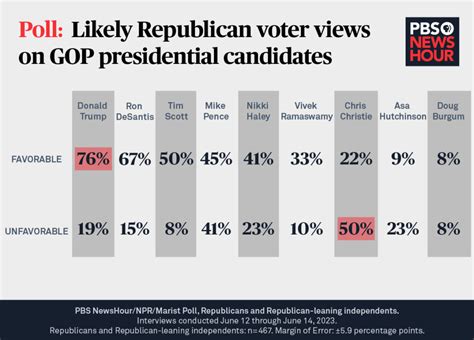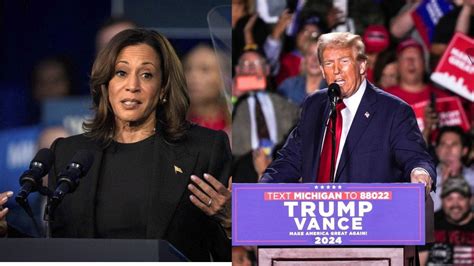Explore the significance of live election polls, their data collection methods, impact on voter behavior, and role in electoral transparency.In today’s fast-paced political landscape, live election polls have emerged as a vital tool for both voters and political analysts alike. These dynamic surveys provide real-time insights into the shifting preferences of the electorate, shaping narratives and influencing campaign strategies. With a growing emphasis on transparency and accuracy, understanding live election polls and their significance is crucial. This article delves into the intricacies of live election polls, exploring how they operate, the methods of data collection employed, and their profound impact on voter behavior. Additionally, we will analyze the evolution of these polls in recent years and their pivotal role in ensuring electoral transparency. Whether you are a curious voter or a seasoned political enthusiast, join us as we uncover the compelling world of live election polls and their influence on democracy.
What Are Live Election Polls And How They Work
Understanding live election polls is essential for grasping the dynamics of modern electoral politics. These polls provide current insights into voter preferences and potential election outcomes by collecting data from a sample of voters. Essentially, live election polls are tools used to gauge public opinion during an election cycle, often conducted in a real-time manner to reflect shifts and trends as they occur.
Typically, live election polls operate through several key steps:
| Step | Description |
|---|---|
| 1 | Sample Selection: Pollsters select a representative sample of voters, ensuring demographic diversity to mirror the electorate. |
| 2 | Data Collection: Data is gathered using various methods such as telephone interviews, online surveys, or in-person polling. |
| 3 | Analysis: Collected data is analyzed to draw conclusions about voting intentions and trends within the sample. |
| 4 | Reporting: Results are reported publicly, often in real-time, to inform media coverage and the electorate. |
Polls typically measure key metrics such as candidate favorability, voter turnout expectations, and critical issue salience. The data collected can change rapidly, which is why many emphasize the importance of understanding the context—such as the timing of the poll and current events—that can affect public opinion.
Live election polls serve as a snapshot of voter sentiment, providing invaluable information that contributes to a broader understanding of electoral outcomes. The accuracy and reliability of these polls largely depend on the methodology used and the skills of the pollsters, which is critical to fostering trust and transparency in the electoral process.
Understanding Live Election Polls: Methods Of Data Collection
In the realm of Understanding Live election polls, data collection methods play a crucial role in generating accurate and reliable poll results. Various techniques are employed to gather public opinion, each with its unique advantages and limitations. Below, we explore some of the most common methods used in live election polling:
| Method | Description | Advantages | Disadvantages |
|---|---|---|---|
| Telephone Surveys | Polling conducted via phone calls, either landline or mobile. | Direct interaction with respondents; opportunity to clarify questions. | Potential bias if certain demographics are less reachable; time-consuming. |
| Online Surveys | Polling conducted through web-based platforms or social media. | Quick data collection; reaches a wide audience quickly. | Sampling bias; respondents may not represent the general population. |
| In-Person Interviews | Face-to-face polling conducted in public areas or controlled environments. | Ability to collect nuanced feedback and build rapport with respondents. | Resource-intensive; limited geographical reach. |
| Mail Surveys | Polling conducted by sending questionnaires through postal mail. | Potential for a more representative sample; can reach hard-to-access populations. | Slow response time; lower response rates compared to other methods. |
The choice of method often depends on various factors such as the target demographic, budget, and required turnaround time for results. Ultimately, each technique’s effectiveness in the context of live election polls highlights the need for a comprehensive approach to capture the diverse opinions of voters accurately. As pollsters continue to refine these methods, the importance of understanding live polling methodologies becomes increasingly paramount for interpreting the data meaningfully.
Analyzing The Development Of Election Polls In Recent Years
In recent years, understanding live election polls has evolved significantly, reflecting advancements in technology, social dynamics, and methodology. The rise of digital technology and social media platforms has transformed how poll data is collected and analyzed, making it easier for pollsters to access a more diverse voter demographic.
Traditionally, telephone surveys dominated the polling landscape. However, with the advent of cell phones and the decline of landline usage, pollsters have adapted their methods. Today, many organizations utilize online surveys, mobile app polling, and even social media measurements to gauge public opinion. This evolution not only increases accessibility but also enhances the accuracy of polls by capturing a wider range of voices.
Moreover, the proliferation of real-time data analytics tools has allowed for more precise monitoring of voter sentiment. Polling agencies now employ complex algorithms to interpret data quickly, adjusting their methodologies to reflect immediate shifts in public opinion, thus improving the timeliness and relevance of their findings.
The growing emphasis on transparency has also reshaped the polling landscape. Voters demand to see the methodologies behind the data collected, prompting polling organizations to disclose their processes, sample sizes, and margin of errors publicly. This shift towards greater transparency aligns with efforts to increase public trust in polling data and ensures that the information presented is reliable and credible.
Additionally, international events and political climates have influenced the development of election polls. Pollsters must now consider factors such as misinformation, polarization, and the effects of major global occurrences when crafting their surveys. These elements add layers of complexity to the polling process and necessitate a more nuanced approach to understanding live polls and their implications.
As we look to the future, the question remains: what further changes might we anticipate in the field of election polling? Innovations in artificial intelligence and machine learning could pave the way for even more sophisticated methods of capturing and analyzing voter preferences, ensuring that live election polls remain a vital tool in the electoral process.
The Impact Of Live Election Polls On Voter Behavior
Live election polls can significantly influence voter perceptions and behavior as the electoral process unfolds. Understanding live election dynamics is crucial for comprehending how these polls impact the electorate.
One of the primary effects of live election polls is the concept of bandwagoning. As results of polls become public, voters may feel compelled to align themselves with the perceived leading candidates. This psychological phenomenon stems from the belief that if a candidate is likely to win, supporting them can be seen as a validation of the voter’s choice.
Conversely, live election polls can also lead to a discouragement effect for candidates trailing in popularity. Voters may feel their votes are less impactful if they observe significant gaps in polling numbers, which can lead to lower turnout or even a switch in support to a more popular candidate.
| Impact Type | Description |
|---|---|
| Bandwagon Effect | Supporters may gravitate towards leading candidates, fearing the losing choice. |
| Discouragement Effect | Lower motivation for voters of less favored candidates, possibly reducing turnout. |
| Strategic Voting | Voters may choose candidates they perceive as having a better chance of winning. |
Moreover, live election polls provide a platform for strategic voting, whereby some voters may choose candidates they believe are viable contenders, even if they do not strongly support them. This behavior can skew the true support levels for candidates and complicate the ability to interpret electoral preferences accurately.
Understanding live election polls is integral for grasping their profound impacts on voter behavior. They not only shape individual voting decisions but also influence the overall momentum and climate of an election campaign.
Understanding Live Election Polls: Their Role In Electoral Transparency
Live election polls play a critical role in promoting understanding live electoral processes by providing real-time insights into voter sentiments and preferences. This transparency enables voters to see how their opinions align with broader electoral trends, fostering greater engagement in the democratic process.
By making polling data accessible, these polls empower citizens to form informed opinions about candidates and issues, thus enhancing public discourse. Moreover, transparency in election polling helps to mitigate misinformation, as reliable data can counteract dubious claims regarding electoral outcomes.
Furthermore, live election polls contribute to electoral accountability. Politicians and parties are often influenced by polling data, leading them to adjust their strategies to better align with voter expectations. This responsiveness can potentially improve governance as elected officials become more attuned to the needs and preferences of their constituents.
Overall, the significance of live election polls in promoting electoral transparency cannot be overstated. They not only provide a snapshot of public sentiment but also encourage active citizen participation, essential for a healthy democracy.
Frequently Asked Questions
What are live election polls?
Live election polls are surveys conducted in real-time to gauge public opinion on candidates or issues during an election period.
Why are live election polls important?
They provide insights into voter preferences, help campaigns adjust strategies, and inform the public about potential election outcomes.
How are live election polls conducted?
They can be conducted via various methods, including telephone interviews, online surveys, and mobile polling, often using statistical sampling techniques.
What factors can affect the accuracy of live election polls?
Factors include sample size, timing of the poll, question wording, and the demographic representation of the respondents.
How do live election polls influence voter behavior?
Poll results can create ‘bandwagon’ effects, where voters support candidates who appear to be leading, or ‘underdog’ effects, where voters rally for those perceived as disadvantaged.
What are some limitations of live election polls?
They may not accurately predict outcomes, can be influenced by media coverage, and may not account for last-minute changes in voter sentiment.
How can the public interpret live election poll results?
It’s essential to consider the margin of error, sample size, and methodology, and to view results as snapshots of current sentiments rather than definitive predictions.









